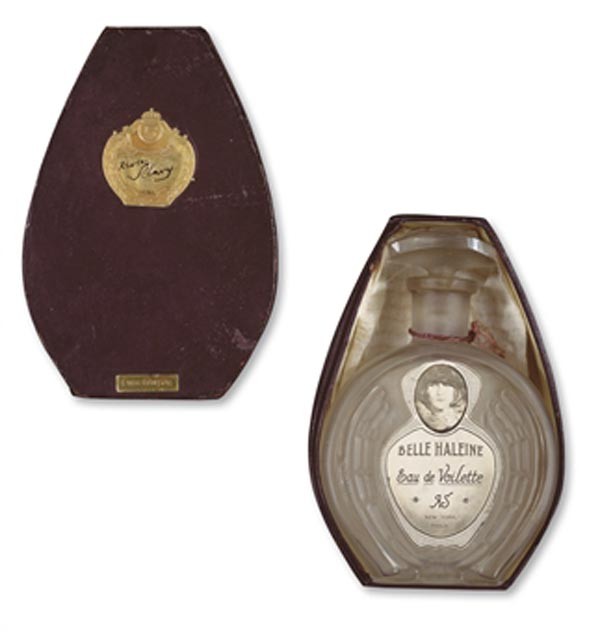Marcel Duchamp
27 - 30 Jan 2011

Marcel Duchamp
Belle Haleine
Eau de Voilette (Beautiful Breath: Veil Water), 1921. Assisted readymade: Rigaud perfume bottle with label created by Marcel Duchamp and Man Ray, inscribed on gold label attached to the back of the box: Rrose / Sélavy / 1921. Private Collection
© Succession Marcel Duchamp / VG Bild-Kunst, Bonn 2010 © Man Ray Trust, Paris / VG Bild-Kunst, Bonn 2010
Belle Haleine
Eau de Voilette (Beautiful Breath: Veil Water), 1921. Assisted readymade: Rigaud perfume bottle with label created by Marcel Duchamp and Man Ray, inscribed on gold label attached to the back of the box: Rrose / Sélavy / 1921. Private Collection
© Succession Marcel Duchamp / VG Bild-Kunst, Bonn 2010 © Man Ray Trust, Paris / VG Bild-Kunst, Bonn 2010
MARCEL DUCHAMP
Belle Haleine: Eau de Voilette, 1921
27 - 30 January 2011
For just 72 hours, the Nationalgalerie will unveil to the public Marcel Duchamp's legendary perfume flacon, "Belle Haleine: Eau de Voilette" from 1921. The work is the only surviving 'assisted readymade' by the most influential artist of the 20th century. Duchamp's unwavering impact on art to this day arises from the consistent way in which he dismisses the traditional concept of art and scrutinizes the mechanisms of both its production and reception. Duchamp (1987-1968) developed the concept of the readymade in the 1910s. He used industrially manufactured mass products that were elevated into works of art through the mere fact that the artist had selected them.
Over the course of the 20th century, his readymades (such as the urinal turned on its side or the bicycle wheel on a wooden stool) have assumed the status of icons of art. Within this group of works, Belle Haleine ist termed an 'assisted readymade', because Duchamp has modified its design. He took a perfume bottle marketed by the French company Rigaud and adorned it with a label designed in collaboration with Man Ray, showing a portait of the artist as his female alter ego, Rrose Sélavy. The groundbraking work, which was lastly in the posession of Yves Saint Laurent and Pierre Bergé and sold on auction in 2009, where it fetched the astonishingly high price of 7.9 million euros, is now on show for the first time since.
Belle Haleine: Eau de Voilette, 1921
27 - 30 January 2011
For just 72 hours, the Nationalgalerie will unveil to the public Marcel Duchamp's legendary perfume flacon, "Belle Haleine: Eau de Voilette" from 1921. The work is the only surviving 'assisted readymade' by the most influential artist of the 20th century. Duchamp's unwavering impact on art to this day arises from the consistent way in which he dismisses the traditional concept of art and scrutinizes the mechanisms of both its production and reception. Duchamp (1987-1968) developed the concept of the readymade in the 1910s. He used industrially manufactured mass products that were elevated into works of art through the mere fact that the artist had selected them.
Over the course of the 20th century, his readymades (such as the urinal turned on its side or the bicycle wheel on a wooden stool) have assumed the status of icons of art. Within this group of works, Belle Haleine ist termed an 'assisted readymade', because Duchamp has modified its design. He took a perfume bottle marketed by the French company Rigaud and adorned it with a label designed in collaboration with Man Ray, showing a portait of the artist as his female alter ego, Rrose Sélavy. The groundbraking work, which was lastly in the posession of Yves Saint Laurent and Pierre Bergé and sold on auction in 2009, where it fetched the astonishingly high price of 7.9 million euros, is now on show for the first time since.
